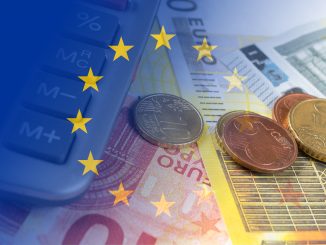
The EUR / USD pair moved down in May, with the impact of various geopolitical triggers, as well as strong economic performance in the US markets. The pair reached its highest level in February, at $1.2555 per euro, and then began to decline in the second half of April, with yields of US Treasuries exceeding their multi-year highs to above 3%. The US GDP for the first quarter turned out to be better than expected, with the euro losing ground against the greenback. By the beginning of May, the European common currency had lost all gains in the first four months of the year.
The first week of May 2018 saw the EUR / USD price index test at 1.20, followed by mixed US Macro data in May. With prudent non-farm payroll data and manufacturing and non-manufacturing PMI data. The eurozone GDP data helped to dampen the decline, while Eurozone CPI data came in pessimistic, which led to the pair testing the 1.18 level at the end of the first week.
The second week of May 2018 contained a relatively light calendar for most of the week. This helped the EUR / USD try to recover some of the losses which incurred the previous week. Meanwhile, the US markets witnessed another week of dovish inflation data. With consumer price index data and PPI in US markets worse than expected, the EUR / USD pair closed the second week of May above 1.19.
In the third week of May, trading opened on the positive side of the common European currency, as the pair moved to 1.19960 dollars per euro. The pair saw a sharp drop for the rest of the week as both the Eurozone and US markets saw pessimistic results in their data, but the US market saw positive building permits and the Philadelphia Fed Manufacturing Index in the second half of the week. This is in addition to the increasing tension in the Italian political, scenario which caused the pair to close the week below 1.17.
In the fourth week of May, yields on US Treasuries slowed while the PMI rose amid positive US data. The shares stabilized with the possibility of a rate hike by the Federal Reserve in the near future, resulting in a new decline in the EUR / USD pair at 1.16.
Some of the factors that led to the EUR / USD fall include geopolitical issues in the Eurozone, such as the uncertain political scenario in Italy and Spain. With the release of downward GDP data, US markets once again saw a pessimistic economic scenario.




Be the first to comment